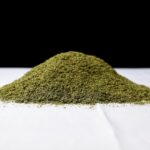Thanks to their convenience and portability, pre-rolls are enjoying increased market share, accounting for 15.3 percent of sales in the United States and one-third of sales in Canada during 2023, according to Headset. With their popularity on the rise, manufacturers face a crucial decision: Do they prioritize meeting volume demands or adhere to the quality standards that made their brand popular by continuing to rely on hand-rolling? Is there a way to get both efficiency and excellence?
For nearly five years, I have helped brands grapple with this predicament. The decision is rarely straightforward. Consumers have a nearly religious respect for hand-rolling, but they also demand price-consciousness, which can be achieved only at scale via automation.
Consumers have mixed reactions to machine-made pre-rolls thanks to some early missteps that created less-than-stellar products. Initially, it seemed quality and quantity were mutually exclusive. But automation has improved over time, and today producers of all sizes can find solutions to satisfy demand while keeping standards high.
When collaborating with partners on their automation journey, I consistently emphasize they should never compromise their brand’s foundational promise. It’s easy to stumble into a quality compromise accidentally while in pursuit of higher throughput, but good automation solutions should never require that kind of tradeoff. Automation should be a vehicle to produce growth without a decline in consumer experience.
When deciding which automated system might be the right fit for your pre-roll brand, it’s important to remember that the goal of automation is to help brands achieve quality, consistency, and efficiency while shifting away from manual labor. Historically, automated pre-roll systems have received a bad rap, but the perfect puff is now more achievable than ever.
One critical key to producing pre-rolls consumers enjoy is controlling particulate density, or how tightly or loosely packed the ground flower is within the cone’s cross section. Particulate density is the most important determiner of how the product smokes. If the biomass is too dense, the joint will lack the necessary airflow space, affecting the draw and resulting in a poor smoking experience. If the biomass is too loose, the pre-rolls will bend at the neck (toward the crutch) and may have air pockets, voids, and uneven compaction, all of which can provide a poor outcome.
The goal of automation is to achieve pre-roll perfection by controlling the density, achieved by uniformly distributing the ground particulate throughout the entire length of the joint. This provides consistency in the pre-roll’s flavor profile. It also affects the pre-roll’s appearance, and who doesn’t want to smoke a good-looking joint?
Even density matters most because of its impact on burn. When the particulate is evenly packed, the joint burns consistently from start to finish. This allows consumers to savor the flavor and aroma of the strain without any harshness or uneven draw.
Inconsistent density can lead to uneven burning, which in turn negatively affects the product’s flavor profile. Areas with less density may burn faster, causing a harsh taste, while tightly packed sections may burn slower, altering the flavor profile of the strain. Even density ensures consumers experience the full spectrum of flavors and terpenes present in the pre-roll.
Proper airflow is essential for a satisfying smoking experience. Pre-rolls with even density ensure that there are no air pockets or obstructions (stems) within the joint, allowing for a smooth and effortless draw each time. The result? A highly enjoyable smoke without canoeing (uneven burning) or the need for constant relighting.
One of the often overlooked benefits of consistent pre-roll density is the assurance that cannabinoids and terpenes are equally distributed throughout the pre-roll. This means consumers can expect a consistent potency level with each puff, ensuring a predictable, reliable sesh.
In the world of pre-rolls, automation continues to prove itself as a necessary mechanism for growth. With the availability of labor decreasing, inconsistencies from manual vibratory methods (which can harm trichomes), and the consumer experience hanging in the balance, even density plays a crucial role in delivering a premium smoking experience. From ensuring a smooth burn to enhancing flavor and potency, consistent density throughout joints is key to maximizing enjoyment for consumers—and, consequently, increasing the profile of your brand.
By understanding the importance of density and employing the right automated solution for production, manufacturers can elevate the quality of pre-rolls while meeting the demands of evolving markets.

Tyler Vaughan serves as channel manager at PreRoll-Er, where he focuses on pre-roll production and packaging machinery. With a deep understanding of the challenges and opportunities that come with automation, he believes automation should never dictate a brand’s direction, but instead be a catalyst for growth.











